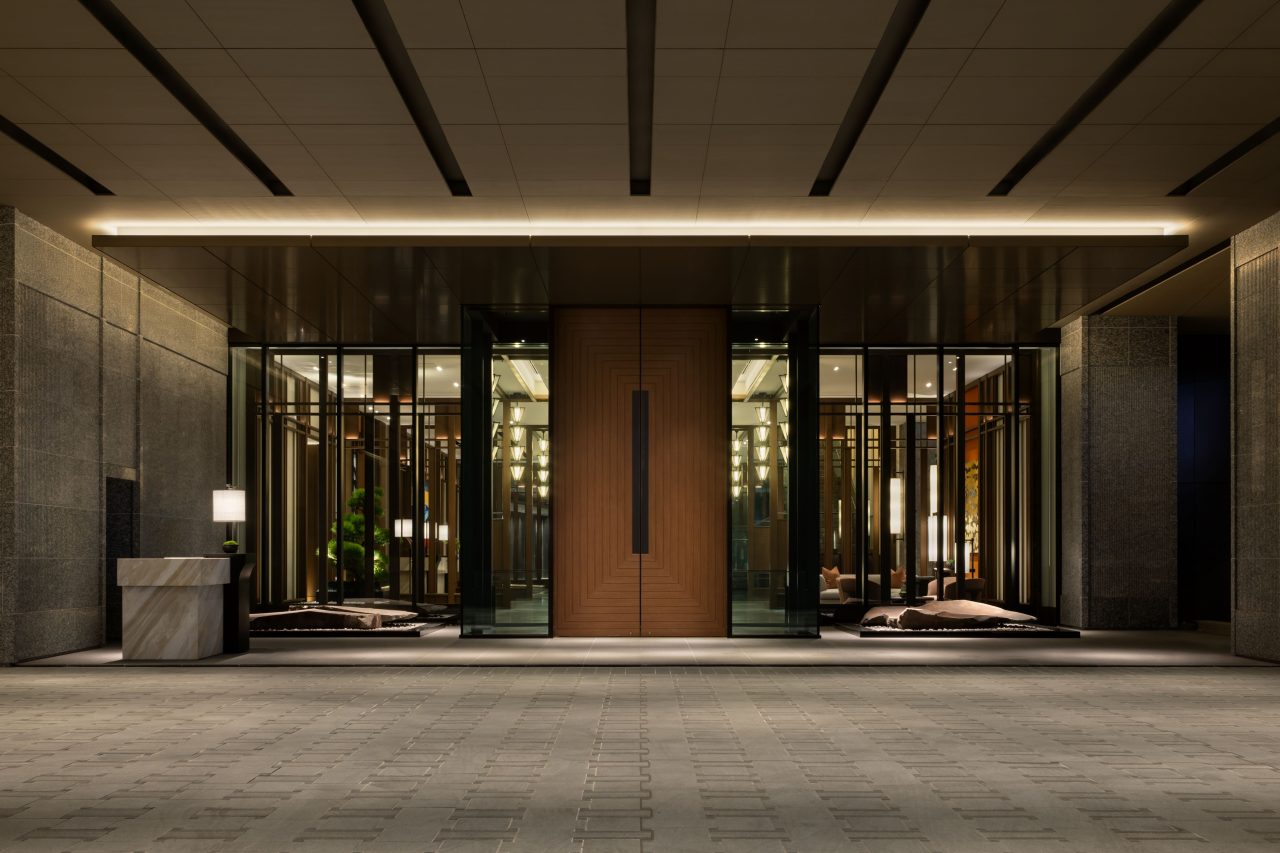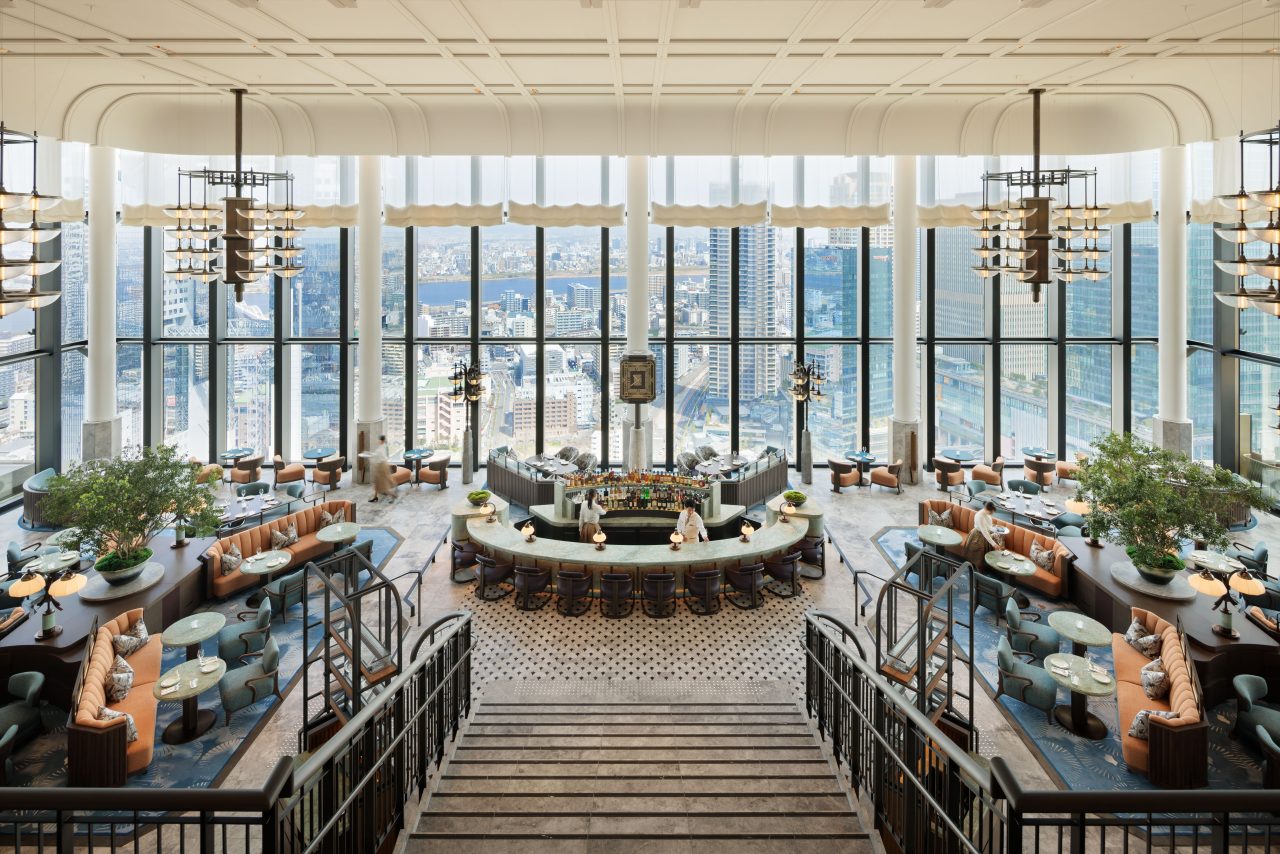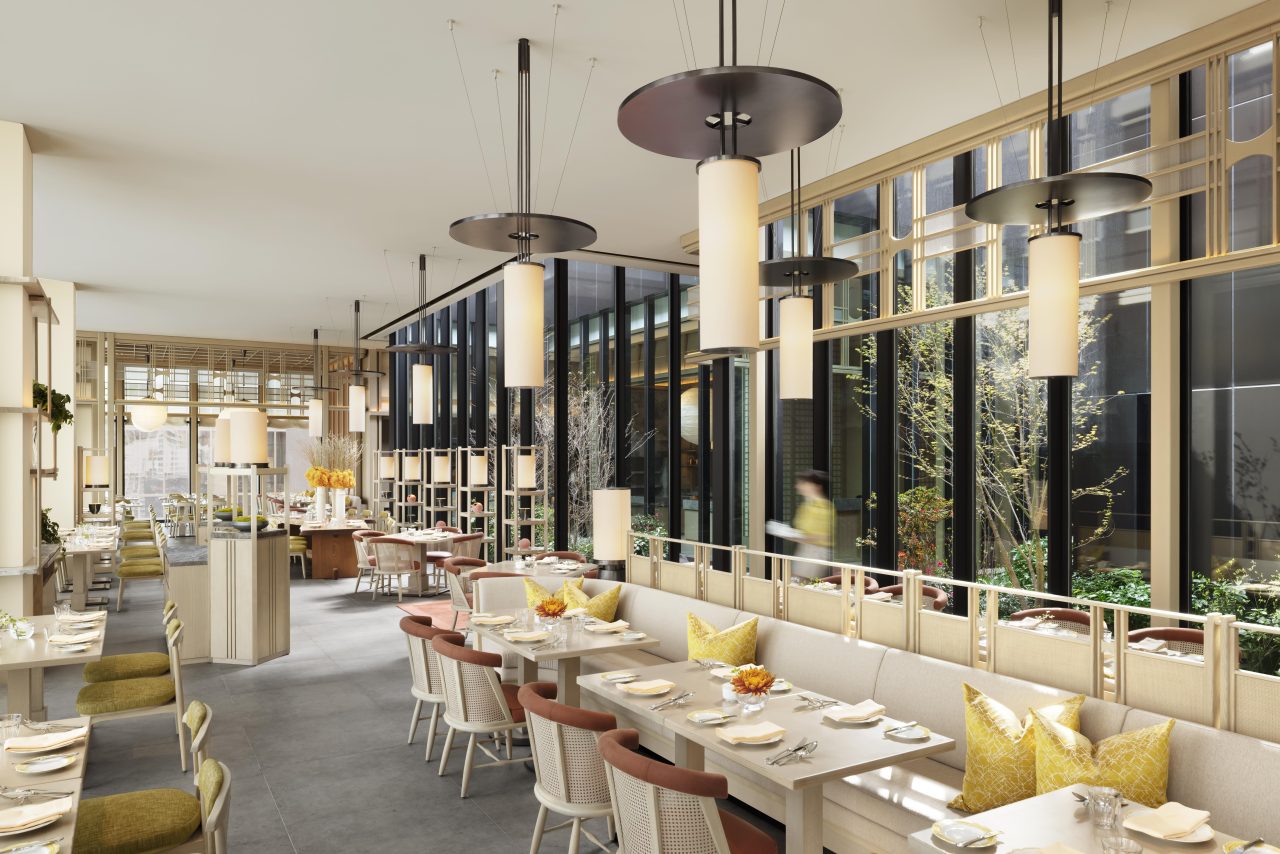Hilton has opened the doors to its first Waldorf Astoria in Japan with the debut of Waldorf Astoria Osaka. Designed by internationally acclaimed architect André Fu, the hotel sets a new benchmark in hospitality architecture, blending the brand’s Art Deco heritage with the elegance of Japanese craftsmanship.
Fu’s design for Waldorf Astoria Osaka draws on the city’s contrasts, placing historic castles and temples alongside contemporary skyscrapers. Taking cues from Frank Lloyd Wright’s 1918 Yodoko Guest House, he reinterprets Art Deco geometry and symmetry through a distinctly Japanese lens.
The result is a blend of precise craftsmanship and refined patterns that connect Waldorf Astoria’s legacy with Osaka’s cultural identity.
Guests arrive through a pavilion-style entrance built with an interlocking wooden framework that nods to local tradition. Inside, artworks by Jun Kaneko and Manika Nagare add colour and energy with bold sculptures and paintings.



Rising to the 29th floor, guests encounter The Pavilion, a soaring space lined with oak and bronze screens, offering sweeping 180-degree views of the city.
The journey continues through The Arcade, a passageway inspired by the original Waldorf Astoria New York. Then it ends at The Lantern—a rotunda of timber, water and light that forms the hotel’s centrepiece.
Dining and social spaces carry the same spirit of theatrical design. Peacock Alley reimagines the iconic New York lounge with triple-height ceilings, striking chandeliers inspired by Osaka’s Tenjin Matsuri festival, and a grand clock at its centre.
Next door, Canes & Tales channels speakeasy allure with emerald ceilings, hand-painted tiles and velvet accents. Jolie Brasserie, by contrast, offers a French dining experience filtered through a Japanese lens, set within a glasshouse pavilion overlooking the skyline.



The hotel’s 252 guest rooms extend the theme of comfort and cultural detail. Design elements such as kumiko screens, washi panels and lacquer finishes pair with a palette of jade, cobalt and caramel that shifts with the light.
Details such as the Matsunoha motif, symbolising longevity and prosperity, add cultural depth while keeping the spaces practical and welcoming.
The Waldorf Astoria Spa draws on ryokan traditions, using materials such as mud paint, shoji paper and crackled glass. It features treatment rooms, hot springs, saunas and a diamond-shaped pool hall set beneath a pitched roof.
For events, the hotel provides nearly 1,000 square metres of well-designed space suitable for a range of occasions. The Grand Ballroom stands out with sculptural detailing and measured proportions. At the same time, the Chapel offers a modern ceremonial space featuring vaulted ceilings, monumental columns, and a chandelier designed to evoke the image of floating candles.
Waldorf Astoria Osaka represents the intersection of international luxury and traditional Japanese craftsmanship. André Fu combines Art Deco elements with local craftsmanship to create a design that speaks to both Osaka’s heritage and its contemporary character.
Related


AloJapan.com